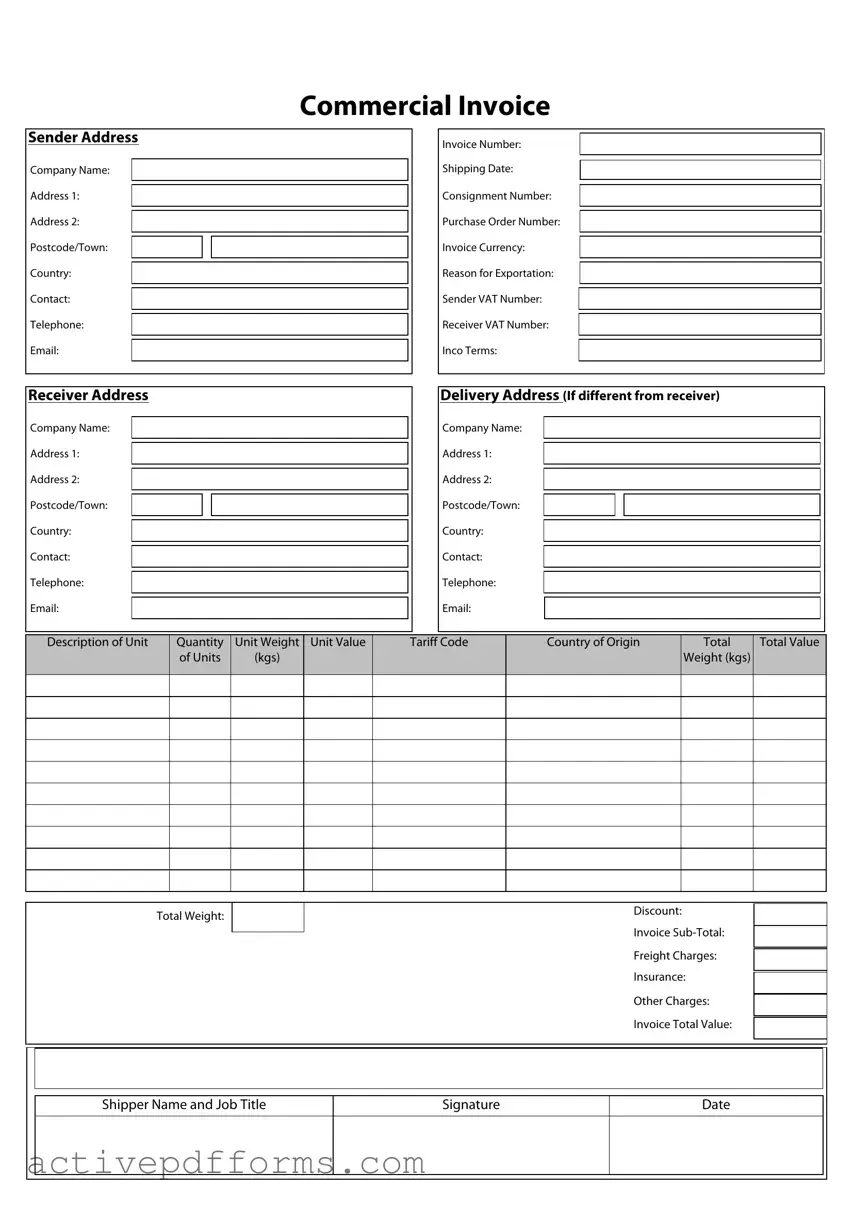A Commercial Invoice form serves as a critical document in international trade, encapsulating essential information that facilitates the export and import process while ensuring compliance with global trade regulations. This comprehensive form includes details about the sender and receiver, such as company names, addresses, contact information, and VAT numbers, which are pivotal for the identification and communication between the trading parties. It meticulously records the transaction's specifics—invoice number, shipping date, consignment number, and purchase order number—providing a clear timeline and reference for the goods being shipped. Crucially, it specifies the invoice currency and the reason for exportation, offering insight into the financial and regulatory aspects of the transaction. The inclusion of Incoterms further clarifies the delivery terms and responsibilities between the seller and buyer, which is paramount in international logistics. Additionally, the form details the goods being shipped, including descriptions, quantity, weight, value, tariff codes, and the country of origin, which are essential for customs clearance. The total weight and value of the shipment, alongside any discounts, freight charges, insurance, and other charges, are meticulously calculated to present the invoice's total value. Culminating with the shipper's name, job title, and signature, the form not only serves as a financial document but also as a binding agreement between parties, underscoring its significance in the intricate dance of global commerce.

